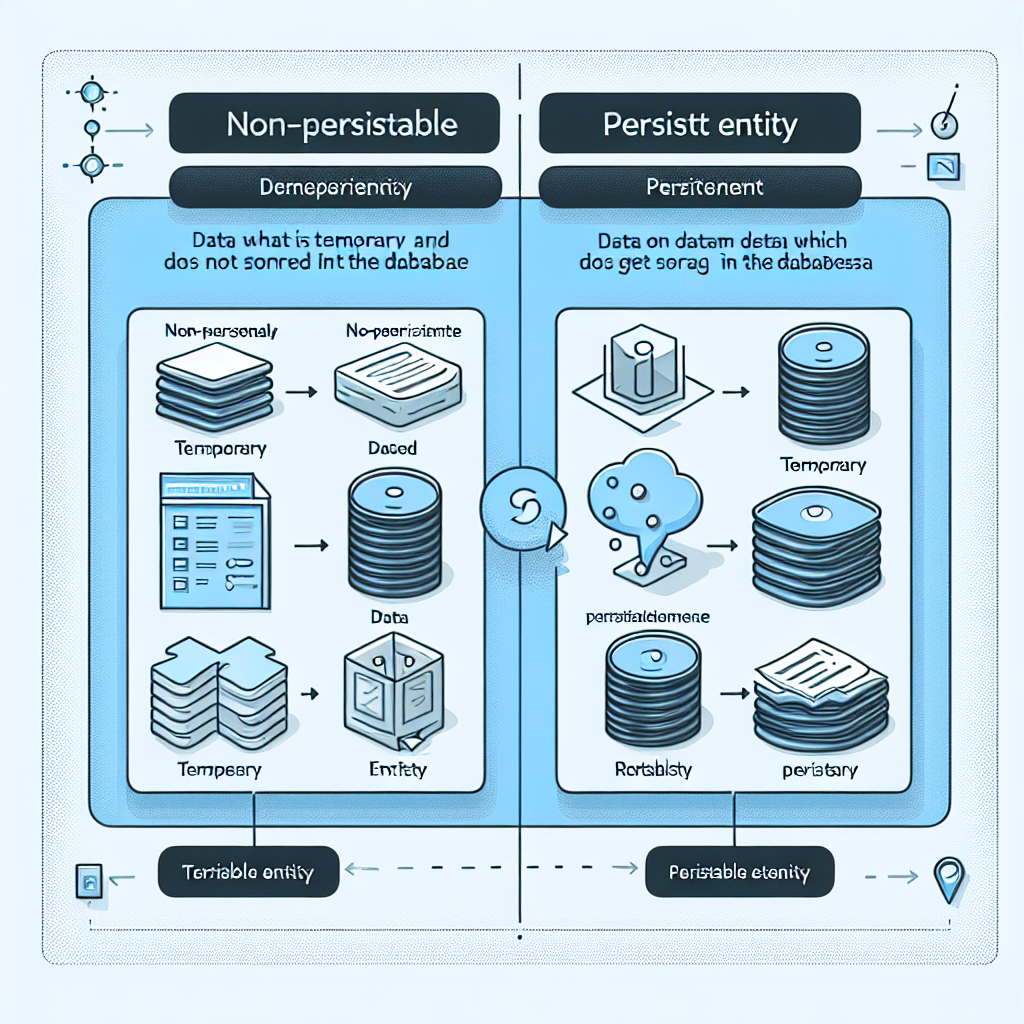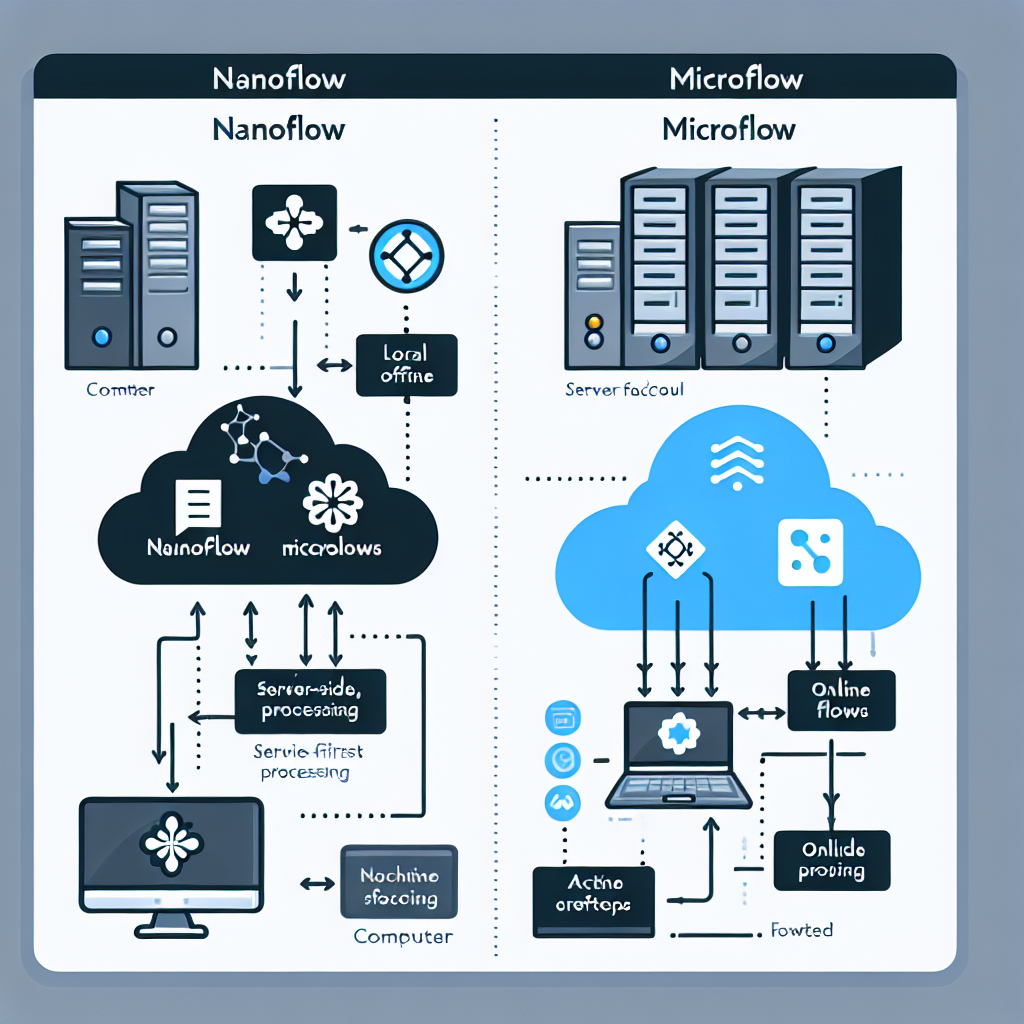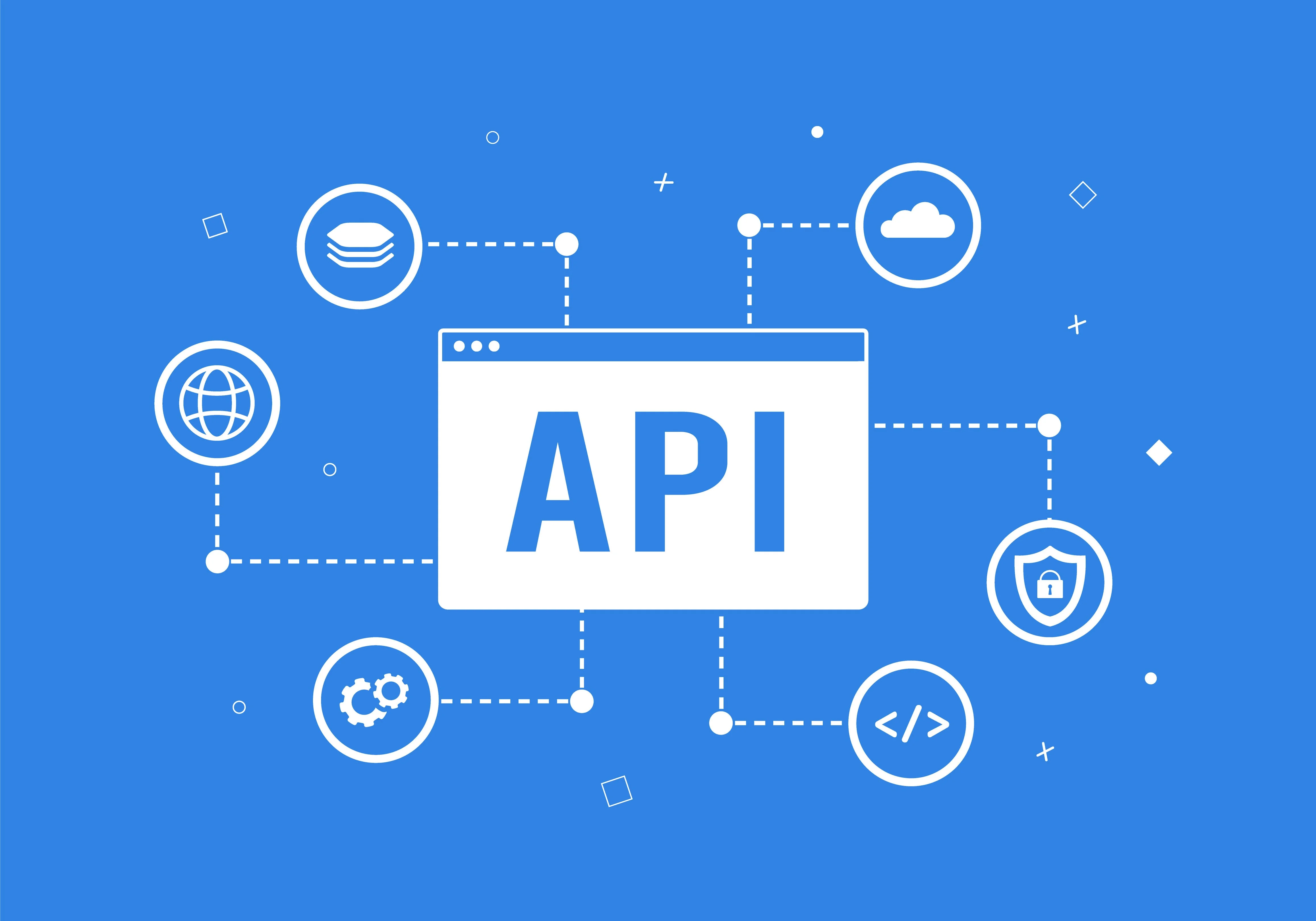
Are you looking for a Mendix freelancer for hire to boost your low-code development projects? Whether you’re a startup aiming to launch your first MVP or an enterprise seeking to modernize legacy systems, I offer professional Mendix development services tailored to your business needs. With years of hands-on experience in Mendix, I help businesses build, deploy, and scale applications faster and more efficiently.
Why Hire a Mendix Freelancer?
The Mendix platform is revolutionizing how applications are developed. As a low-code development tool, it enables faster delivery of applications with minimal hand-coding. However, to fully leverage Mendix’s power, you need someone who understands the platform inside and out. That’s where a dedicated Mendix freelancer like me comes in.
Here are a few reasons why working with a Mendix freelancer can be beneficial:
- Cost-effective: Hiring a freelancer is often more affordable than engaging a full-time developer or agency.
- Flexible collaboration: I offer flexible engagement models—whether you need short-term assistance or long-term support.
- Quick turnaround: With my extensive Mendix experience, I can deliver solutions rapidly without compromising on quality.
- Scalable solutions: From simple workflows to enterprise-grade applications, I build scalable solutions tailored to your business.
My Mendix Development Services
As a seasoned Mendix expert, I offer a wide range of services to support your application lifecycle:
- Custom App Development: From idea to launch, I build custom Mendix applications that align with your business goals.
- UI/UX Design: I create intuitive and responsive user interfaces to enhance user engagement.
- Workflow Automation: Streamline your processes with smart workflows and integrations.
- Legacy System Modernization: Replace outdated systems with agile Mendix-based applications.
- Third-party Integrations: I integrate Mendix apps with external systems, APIs, and databases.
- Performance Optimization: Ensure your apps run smoothly and efficiently with my optimization services.
- Ongoing Maintenance & Support: I provide continuous support to keep your Mendix apps up-to-date and bug-free.
Industries I Work With
Over the years, I’ve worked with clients across various industries, including:
- Finance & Banking
- Healthcare
- Manufacturing
- Retail & E-commerce
- Logistics
- Education & eLearning
No matter your industry, I can adapt Mendix solutions to meet your unique requirements.
Why Choose Me as Your Mendix Freelancer?
There are many developers out there, but finding the right Mendix freelancer for hire can make all the difference. Here’s what sets me apart:
- Certified Mendix Developer: I hold official Mendix certifications, ensuring best practices and compliance.
- Proven Track Record: I’ve successfully delivered multiple Mendix projects for clients around the globe.
- Client-Centric Approach: I prioritize clear communication, transparency, and client satisfaction.
- Agile Methodology: I follow agile practices to ensure flexibility and faster delivery.
- Problem Solver: I don’t just code—I help solve real business problems with smart solutions.
How to Get Started?
If you’re ready to bring your idea to life or need help optimizing your existing Mendix application, I’d love to hear from you. Let’s discuss your project and see how I can help you achieve your goals.
👉 To get in touch, simply visit my website and click and Contact Us. Fill out the form with your project details, and I’ll get back to you promptly.
Whether you have a full project plan or just a concept, I’m here to guide you through every step of the development process.
SEO Keywords to Keep in Mind
This article is optimized for the following keywords to help you find the right talent:
- Mendix freelancer for hire
- Hire Mendix developer
- Mendix expert
- Low-code Mendix developer
- Freelance Mendix consultant
- Custom Mendix application development
- Mendix app developer
If you found this page while searching for any of the above, you’re in the right place.
Final Thoughts
Hiring a skilled Mendix freelancer can be the key to accelerating your digital transformation. With my expertise, you can build powerful, user-friendly applications faster and more affordably than traditional development methods.
Don’t let your app idea sit on the shelf. Let’s bring it to life with Mendix.
👉 Click and Contact Us on my website to start your Mendix journey today!
Thank you for considering me as your Mendix development partner. I look forward to working with you and turning your vision into a high-performance application.

In the world of Mendix, a leading low-code application development platform, entities play a crucial role in how data is structured and managed within applications. Entities in Mendix can be classified into two main types: non-persistable and persistable entities. Understanding the differences between these two types is vital for developers to effectively manage data and optimize application performance. This article explores the characteristics, use cases, and key differences between non-persistable and persistable entities in Mendix.
What is Persistable Entity?
Persistable entities in Mendix are designed to store data that needs to be saved in the database. They represent the core data model of an application and are crucial for maintaining long-term data storage. Here are some characteristics and use cases of persistable entities:
- Database Storage: Persistable entities are stored in the Mendix database, meaning their data is saved even after the application is closed or restarted.
- Data Integrity and Consistency: These entities help maintain data integrity and consistency, as they are managed by the database with ACID (Atomicity, Consistency, Isolation, Durability) properties.
- Use Cases: Persistable entities are ideal for data that must be retained over time, such as user information, transaction records, and product catalogs.
Characteristics of Persistable Entity
- Long-Term Storage: Designed for data that requires long-term storage and retrieval. They are automatically saved to the database when created or modified.
- Security: Benefit from database-level security measures, ensuring that data is protected against unauthorized access.
- Data Relationships: Can establish relationships with other persistable entities, enabling complex data models and queries.
- Performance Considerations: While they provide robust data management, operations involving persistable entities may be slower due to database interactions, especially with large datasets.
What is Non-Persistable Entity?
Non-persistable entities, also known as transient entities, are used for temporary data storage that does not need to be saved in the database. They are typically used to manage data within a session or process. Here are some characteristics and use cases of non-persistable entities:
- Temporary Data: Non-persistable entities hold data temporarily, which is discarded when the session ends or the application is closed.
- Use Cases: Ideal for scenarios where data is needed only during a single user session or for temporary calculations, such as form inputs, search filters, or session-specific data.
Characteristics of Non-Persistable Entity
- In-Memory Storage: Data is stored in memory rather than the database, allowing for faster read and write operations.
- No Database Overhead: Since they are not stored in the database, non-persistable entities do not incur the overhead associated with database transactions.
- Session-Specific: Data is specific to a user session and is lost when the session ends, making them unsuitable for long-term data storage.
- Performance Benefits: Ideal for improving performance in scenarios where data persistence is not required, as they eliminate the need for database interactions.
Key Differences Between Non-Persistable and Persistable Entity
- Data Storage:
- Persistable Entities: Data is stored in the Mendix database, ensuring long-term persistence and availability.
- Non-Persistable Entities: Data is stored in memory and is temporary, disappearing after the session ends.
- Use Cases:
- Persistable Entities: Suitable for data that needs to be retained and accessed over time, such as customer records and order details.
- Non-Persistable Entities: Best for temporary data needs, like form inputs or calculations that do not require saving.
- Performance Considerations:
- Persistable Entities: Involve database interactions, which can impact performance, especially with large datasets.
- Non-Persistable Entities: Provide faster performance for temporary data operations, as they do not involve database access.
- Data Relationships:
- Persistable Entities: Can establish complex relationships with other entities, supporting advanced data modeling.
- Non-Persistable Entities: Typically used in isolation or with simple associations to persistable entities.
- Security:
- Persistable Entities: Benefit from database security measures, ensuring data protection.
- Non-Persistable Entities: Require careful handling to ensure data security, as they are not protected by database-level security.
Conclusion
Understanding the differences between non-persistable and persistable entities in Mendix is crucial for developers aiming to build efficient and effective applications. Persistable entities are essential for managing long-term data storage and ensuring data integrity, while non-persistable entities offer performance benefits for temporary data handling. By leveraging the strengths of each entity type, developers can optimize their applications for both performance and functionality, ensuring they meet the needs of users and businesses alike. Whether you are building a data-intensive application or a lightweight, session-based tool, choosing the right entity type is a key step in successful Mendix development.

In the realm of Mendix, a leading low-code development platform, developers often encounter two essential concepts: nanoflows and microflows. Both are pivotal in automating processes and defining logic within applications, yet they serve different purposes and operate in distinct environments. Understanding the differences between nanoflows and microflows is crucial for developers aiming to optimize their applications effectively. This article delves into the characteristics, use cases, and differences between these two types of flows in Mendix.
What are Microflows?
Microflows in Mendix are server-side logic flows that allow developers to automate complex processes and operations. They are akin to traditional programming functions but are designed using a visual interface, making them more accessible and easier to maintain. Microflows can be used to perform a wide array of tasks, including:
- Database Operations: Create, read, update, and delete (CRUD) operations on the database.
- Integration: Interact with external systems and services through REST or SOAP APIs.
- Complex Logic: Implement conditional logic and loops to handle intricate business rules.
- Error Handling: Manage exceptions and errors that occur during execution.
Characteristics of Microflows
- Server-Side Execution: Microflows run on the server, meaning they can access and manipulate data stored in the Mendix database.
- Security: Since they execute on the server, microflows benefit from server-side security measures, reducing the risk of exposing sensitive data.
- Performance: Suitable for processes that require heavy data manipulation or integration with external systems.
- Scalability: Designed to handle larger workloads, making them ideal for operations that involve significant data processing.
What are Nanoflows?
Nanoflows, on the other hand, are client-side logic flows introduced to enhance the user experience by allowing certain processes to be executed directly on the client’s device. This capability makes nanoflows particularly useful for operations that need to be quick and responsive. Typical use cases for nanoflows include:
- UI Interactions: Update user interface elements instantly without server round-trips.
- Validation: Perform client-side validation to provide immediate feedback to users.
- Device Capabilities: Access device-specific features such as geolocation or local storage.
Characteristics of Nanoflows
- Client-Side Execution: Nanoflows execute on the client’s device, which allows for faster interactions since they do not require communication with the server for execution.
- Limited Data Access: They can only access data that is available on the client side, which means they cannot directly interact with the server-side database.
- Improved User Experience: By reducing server round-trips, nanoflows can significantly enhance the responsiveness of applications.
- Offline Support: Nanoflows can be used in offline scenarios, allowing applications to function even without a network connection.
Key Differences Between Nanoflows and Microflows
- Execution Environment:
- Microflows: Execute on the server, making them suitable for operations that involve server-side data and processing.
- Nanoflows: Execute on the client, ideal for enhancing user interactions and performing tasks that do not require server communication.
- Data Access:
- Microflows: Have full access to the Mendix database and can perform complex data manipulations.
- Nanoflows: Limited to the data available on the client, focusing on improving the user interface and experience.
- Performance Considerations:
- Microflows: Better suited for tasks that need heavy data processing or involve external integrations.
- Nanoflows: Provide faster execution for tasks that can be completed on the client side, reducing latency.
- Use Cases:
- Microflows: Ideal for backend operations, such as data processing, integrations, and business logic implementation.
- Nanoflows: Best for frontend tasks, like real-time UI updates, client-side validations, and offline capabilities.
- Security:
- Microflows: Benefit from server-side security, making them more secure for handling sensitive data.
- Nanoflows: While faster, they require careful consideration of data security since they run on the client side.
Conclusion
Both nanoflows and microflows are integral components of Mendix that serve distinct purposes within the application development process. Understanding their differences and appropriate use cases is essential for developers to build efficient, responsive, and secure applications. By leveraging the strengths of each, developers can create powerful applications that provide seamless user experiences while maintaining robust backend operations. Whether enhancing user interactions with nanoflows or managing complex server-side processes with microflows, the right choice can significantly impact the performance and effectiveness of Mendix applications.

In the rapidly evolving world of technology, businesses are constantly seeking innovative solutions to stay ahead of the competition. One such innovation that has gained significant traction is low-code development. Among the leaders in this domain is Mendix, a powerful platform that enables enterprises to accelerate their digital transformation. However, to fully leverage the potential of Mendix, you need the right expertise. This is where hiring a Mendix expert online becomes crucial.
Understanding Mendix and Its Benefits
Mendix is a low-code application development platform that allows developers to create applications with minimal hand-coding. It provides a visual development interface, enabling faster and more efficient app creation. Here are some key benefits of using Mendix:
- Speed and Efficiency: Mendix reduces the time required to develop applications. With its drag-and-drop interface and reusable components, developers can build apps much faster than traditional coding methods.
- Collaboration: The platform fosters collaboration between IT and business teams. Its user-friendly interface allows non-technical stakeholders to participate in the development process, ensuring the final product aligns with business needs.
- Scalability: Mendix supports scalable applications, allowing businesses to start small and expand their applications as needed without significant rework.
- Integration: It offers seamless integration with existing systems and third-party services, making it easier to connect new applications with existing infrastructure.
- Cost-Effectiveness: By reducing development time and resource requirements, Mendix helps lower the overall cost of application development.
Why Hire a Mendix Expert?
While Mendix simplifies the app development process, having a Mendix expert on your team can significantly enhance the quality and effectiveness of your applications. Here’s why hiring a Mendix expert online is beneficial:
- Specialized Knowledge: Mendix experts possess in-depth knowledge of the platform’s capabilities and best practices. They can help you maximize Mendix’s features to create robust and efficient applications.
- Custom Solutions: An expert can tailor solutions to meet your specific business needs, ensuring that the applications developed are aligned with your strategic goals.
- Problem-Solving Skills: Experienced Mendix developers can quickly identify and resolve issues, minimizing downtime and ensuring smooth operation of your applications.
- Up-to-Date with Trends: A Mendix expert stays current with the latest updates and trends in low-code development, ensuring your applications are built using the most modern and effective techniques.
How to Hire a Mendix Expert Online
Finding the right Mendix expert online involves several steps to ensure you hire a professional who meets your specific needs:
- Define Your Requirements: Clearly outline what you need from a Mendix expert. Are you looking for someone to build an application from scratch, or do you need assistance with an existing project?
- Research and Shortlist: Use online platforms and professional networks to find potential candidates. Look for profiles with extensive experience in Mendix development and positive client feedback.
- Check Credentials: Verify the qualifications and certifications of potential candidates. A certified Mendix developer will have proven expertise in using the platform.
- Conduct Interviews: Interview shortlisted candidates to assess their technical skills, problem-solving abilities, and understanding of your business needs.
- Review Portfolios: Ask for examples of previous work to gauge the quality and scope of their experience.
- Discuss Terms: Once you’ve selected a candidate, discuss terms of engagement, including project timelines, deliverables, and payment.
Platforms to Find Mendix Experts
Several platforms can connect you with qualified Mendix experts:
- Freelance Websites: Platforms like Upwork, Freelancer, and Fiverr allow you to browse profiles of Mendix developers and hire them for specific projects.
- Professional Networks: LinkedIn is a valuable resource for finding Mendix experts. You can view their professional experience, endorsements, and recommendations.
- Mendix Community: The Mendix community itself is a great place to find certified experts. The platform often has forums and groups where developers showcase their skills and collaborate on projects.
Conclusion
Hiring a Mendix expert online can be a game-changer for businesses looking to harness the power of low-code development. With their specialized skills and knowledge, Mendix experts can help you create high-quality, efficient applications that drive business growth. By carefully selecting the right expert, you can ensure your projects are completed on time, within budget, and to a high standard of quality. Embrace the future of application development today by bringing a Mendix expert on board, and unlock the full potential of your digital initiatives

In today’s fast-paced digital landscape, businesses are increasingly seeking agile and efficient ways to develop applications and streamline operations. Mendix, a leading low-code application development platform, has emerged as a game-changer by enabling rapid application development with minimal hand-coding. As companies worldwide recognize the benefits of this platform, the demand for skilled Mendix developers has surged. This article explores the burgeoning field of remote Mendix developer services, focusing on the unique advantages offered by Turkish developers in this domain.
Why Mendix?
Mendix is designed to accelerate the application development process, allowing businesses to innovate quickly and efficiently. Its visual development approach simplifies complex coding tasks, enabling developers to focus on delivering business value. With features like drag-and-drop interfaces, reusable components, and seamless integration capabilities, Mendix empowers organizations to create robust applications tailored to their specific needs.
The Rise of Remote Development
The shift towards remote work has transformed the global IT landscape, making it possible for businesses to access top talent regardless of geographical boundaries. Remote development services offer several advantages, including cost savings, flexibility, and access to a diverse pool of expertise. For companies looking to leverage Mendix, hiring remote developers from Türkiye presents a compelling option.
Advantages of Hiring Remote Mendix Developers from Türkiye
1. Cost-Effectiveness
One of the primary reasons businesses opt for remote development services is cost savings. Türkiye offers a competitive pricing structure compared to Western countries, allowing companies to optimize their budgets without compromising on quality. This cost-effectiveness makes Turkish developers an attractive choice for businesses looking to maximize their return on investment.
2. Highly Skilled Workforce
Türkiye boasts a robust educational system with a strong emphasis on technology and engineering. Turkish universities produce a steady stream of skilled IT professionals who are well-versed in modern development methodologies, including low-code platforms like Mendix. This ensures that businesses have access to a pool of talented developers capable of delivering high-quality solutions.
3. Cultural Compatibility
Cultural compatibility is a crucial factor in successful remote collaborations. Turkish developers are known for their adaptability and strong work ethic, making them well-suited for international projects. Their ability to communicate effectively in English further facilitates seamless collaboration with global teams.
4. Time Zone Advantage
Türkiye’s strategic location offers a unique time zone advantage for businesses in Europe and Asia. This allows for overlapping working hours, enabling real-time communication and quicker turnaround times. Such synchronization is invaluable for projects that require constant interaction and iterative development.
5. Innovation and Creativity
Turkish developers are renowned for their innovative approach and creative problem-solving skills. They bring fresh perspectives to the table, offering unique solutions that drive business growth and innovation. Their ability to think outside the box is particularly beneficial in the dynamic field of application development, where adaptability and creativity are key.
How to Choose the Right Remote Mendix Developer
When selecting a remote Mendix developer from Türkiye, businesses should consider several factors to ensure successful collaboration:
- Portfolio and Experience: Review the developer’s portfolio and past projects to assess their expertise and suitability for your specific needs.
- Technical Skills: Ensure the developer has a strong understanding of Mendix and related technologies, as well as experience in your industry.
- Communication Skills: Effective communication is crucial for remote collaborations. Choose a developer who can articulate ideas clearly and respond promptly.
- Cultural Fit: Assess the developer’s ability to work within your company’s culture and align with your business values.
- Client Testimonials: Look for reviews and testimonials from previous clients to gauge the developer’s reliability and work quality.
Conclusion
As businesses continue to embrace digital transformation, the demand for efficient and agile application development solutions like Mendix is set to grow. Remote Mendix developer services from Türkiye offer a compelling combination of cost-effectiveness, technical expertise, and cultural compatibility, making them an ideal choice for companies looking to innovate and stay ahead in the competitive market.
By leveraging the skills and creativity of Turkish developers, businesses can unlock new opportunities for growth and innovation, ensuring they remain at the forefront of their industries. Whether you’re a startup looking to build your first application or an established enterprise seeking to enhance your digital capabilities, remote Mendix developers from Türkiye can provide the expertise and support you need to succeed.

As businesses strive to keep pace with technological advancements, many find themselves hindered by outdated legacy systems that are costly to maintain and difficult to integrate with modern technologies. Mendix, a leading low-code application development platform, offers a powerful solution for legacy system modernization. By leveraging Mendix, organizations can transform their digital landscape, improve operational efficiency, and drive innovation. This article explores how Mendix facilitates the modernization of legacy systems and the benefits it brings to businesses.
Understanding Legacy System Challenges
Legacy systems, while often reliable, pose significant challenges for modern businesses. These include high maintenance costs, limited scalability, integration difficulties, and an inability to support new business processes or technologies. As a result, organizations are increasingly seeking ways to modernize these systems to remain competitive and agile in a rapidly changing market.
Mendix’s Role in Legacy System Modernization
Mendix provides a comprehensive approach to modernizing legacy systems, enabling businesses to overcome the limitations of outdated technology. Here are some key ways Mendix facilitates legacy system modernization:
1. Low-Code Development for Rapid Modernization
Mendix’s low-code platform accelerates the modernization process by allowing developers to build applications quickly and efficiently. With its visual development environment, Mendix reduces the need for extensive coding, enabling businesses to rapidly develop and deploy modern applications that replace or augment legacy systems.
2. Seamless Integration with Existing Systems
One of Mendix’s core strengths is its ability to integrate seamlessly with existing systems and technologies. Mendix supports comprehensive API integration, allowing businesses to connect new applications with legacy systems and databases. This ensures data consistency and enables organizations to leverage existing infrastructure while gradually transitioning to modern solutions.
3. Incremental Modernization Approach
Mendix supports an incremental approach to modernization, allowing businesses to modernize their systems in phases rather than undertaking a complete overhaul. This approach minimizes disruption, reduces risk, and allows organizations to prioritize modernization efforts based on business needs and resources.
4. Enhanced User Experiences
By modernizing legacy systems with Mendix, businesses can deliver enhanced user experiences through intuitive and responsive user interfaces. Mendix provides a range of UI components and templates that can be customized to meet specific design requirements, improving user engagement and satisfaction.
5. Cloud-Native Architecture
Mendix’s cloud-native architecture ensures that modernized applications are scalable, resilient, and capable of supporting future growth. By moving legacy systems to the cloud, businesses can reduce infrastructure costs, improve performance, and enhance disaster recovery capabilities.
Benefits of Modernizing Legacy Systems with Mendix
1. Reduced Maintenance Costs
Modernizing legacy systems with Mendix significantly reduces maintenance costs by replacing outdated technology with efficient, low-maintenance solutions. This allows businesses to allocate resources to more strategic initiatives and improve overall financial performance.
2. Increased Agility and Flexibility
Mendix enables businesses to adapt quickly to changing market conditions and customer demands. By modernizing legacy systems, organizations can implement new features and technologies faster, improving their ability to innovate and respond to new opportunities.
3. Improved Integration and Data Accessibility
Seamless integration with modern applications ensures that data is accessible and consistent across all systems. This improves decision-making, enhances collaboration, and enables businesses to deliver more comprehensive and connected services to their customers.
4. Enhanced Security and Compliance
Modernizing legacy systems with Mendix enhances security by incorporating modern security protocols and standards. This reduces the risk of data breaches and ensures compliance with industry regulations, protecting both the business and its customers.
5. Future-Proofing the Business
By leveraging Mendix for legacy system modernization, businesses can future-proof their operations, ensuring they are well-equipped to embrace new technologies and adapt to evolving market trends. This positions organizations for long-term success and competitiveness.
Conclusion
Legacy system modernization is a critical step for businesses looking to thrive in today’s digital era. Mendix offers a powerful solution for transforming outdated systems into modern, efficient, and scalable applications. With its low-code development capabilities, seamless integration features, and cloud-native architecture, Mendix empowers organizations to modernize their legacy systems rapidly and effectively.
As businesses continue to navigate the complexities of digital transformation, Mendix stands out as a leader in enabling legacy system modernization. By embracing Mendix, organizations can unlock new opportunities for innovation, improve operational efficiency, and ensure their technology infrastructure is ready for the future.

In the rapidly evolving digital landscape, businesses need agile and efficient solutions to develop applications that meet the demands of both mobile and web users. Mendix, a leading low-code application development platform, offers powerful tools and features to create robust native mobile and web applications. This article explores how Mendix empowers businesses to build these applications, highlighting the benefits and capabilities that make it a preferred choice for developers.
Mendix for Native Mobile Applications
1. Native Mobile Development Capabilities
Mendix simplifies the development of native mobile applications by providing a comprehensive set of tools that streamline the process. With Mendix, developers can create mobile apps that offer native performance and user experiences by leveraging device-specific features such as GPS, camera, and push notifications. This ensures that applications are not only functional but also engaging and responsive.
2. Offline Functionality
One of the standout features of Mendix’s mobile development capabilities is its support for offline functionality. Mendix allows developers to build applications that can operate without an internet connection, ensuring continuous access to critical features and data. This is particularly beneficial for users in areas with limited connectivity or for applications that require reliable offline operation.
3. Cross-Platform Deployment
Mendix enables developers to build cross-platform mobile applications that run seamlessly on both iOS and Android devices. By using a single codebase, businesses can reduce development time and costs while ensuring a consistent user experience across different platforms. This cross-platform capability is crucial for reaching a broader audience and maximizing the application’s impact.
4. Rapid Prototyping and Iteration
The Mendix platform supports rapid prototyping and iteration, allowing developers to quickly create and test mobile applications. This agile approach enables businesses to gather user feedback early in the development process and make necessary adjustments, ensuring that the final product meets user expectations and business objectives.
Mendix for Web Applications
1. Responsive Web Design
Mendix provides robust tools for developing responsive web applications that adapt to various screen sizes and devices. This capability ensures that users have a seamless and optimized experience whether they are accessing the application from a desktop, tablet, or smartphone. Responsive design is essential for maintaining user engagement and satisfaction across different platforms.
2. Rich User Interfaces
With Mendix, developers can create web applications with rich and interactive user interfaces. The platform offers a wide range of UI components and templates that can be customized to meet specific design requirements. This allows businesses to deliver visually appealing and intuitive applications that enhance user engagement and satisfaction.
3. Integration with Existing Systems
Mendix’s integration capabilities allow web applications to connect seamlessly with existing systems and data sources. This ensures that web applications can leverage existing infrastructure and deliver comprehensive functionality. Whether it’s integrating with CRM systems, databases, or third-party services, Mendix makes it easy to create interconnected web applications.
4. Scalable Architecture
Mendix’s cloud-native architecture ensures that web applications are scalable and can handle varying levels of traffic and user demand. This scalability is crucial for businesses looking to grow and expand their digital presence, providing the flexibility to adapt to changing market conditions and user needs.
Benefits of Using Mendix for Application Development
1. Accelerated Development Process
Mendix’s low-code approach significantly accelerates the development process for both mobile and web applications. By reducing the need for extensive coding and providing a visual development environment, Mendix enables faster time-to-market, allowing businesses to respond quickly to new opportunities and challenges.
2. Enhanced Collaboration
Mendix fosters collaboration between business and IT teams, ensuring that applications align with business goals and user needs. The platform’s collaborative tools allow stakeholders to participate in the development process, providing valuable insights and feedback that enhance the final product.
3. Cost Efficiency
By enabling the development of cross-platform applications with a single codebase, Mendix reduces development costs and resource requirements. This cost efficiency is particularly beneficial for startups and small businesses looking to maximize their return on investment.
4. High-Quality Applications
Mendix’s focus on quality ensures that applications are robust, reliable, and secure. With built-in testing and quality assurance tools, developers can identify and address issues early in the development process, reducing the risk of bugs and enhancing user satisfaction.
Conclusion
Mendix offers a comprehensive suite of tools and capabilities for developing native mobile and web applications, empowering businesses to innovate rapidly and effectively. Whether you’re looking to create engaging mobile experiences or scalable web applications, Mendix provides the flexibility and power needed to achieve your goals.
As the demand for digital solutions continues to grow, Mendix stands out as a leader in low-code application development, offering the tools and capabilities to help businesses succeed in a competitive landscape. By leveraging Mendix, organizations can build high-quality applications that meet the needs of their users and drive business success.

In today’s fast-paced business environment, automation is a key driver of efficiency and innovation. Organizations are constantly seeking ways to streamline operations, reduce manual workloads, and enhance productivity. Mendix, a leading low-code application development platform, offers robust capabilities for rapidly automating tasks and processes, empowering businesses to achieve these goals with ease. This article explores how Mendix facilitates task automation and the benefits it brings to modern enterprises.
The Role of Automation in Modern Business
Automation has become a critical component of digital transformation, allowing businesses to optimize processes, minimize errors, and focus on strategic initiatives. By automating repetitive and time-consuming tasks, organizations can improve operational efficiency, reduce costs, and enhance the overall quality of their services.
Mendix’s Automation Capabilities
Mendix is designed to simplify and accelerate the automation of business processes. Here are some key features that enable rapid task automation with Mendix:
1. Visual Workflow Modeling
Mendix provides a visual workflow modeling environment that allows users to design and automate business processes using drag-and-drop components. This intuitive interface makes it easy for both technical and non-technical users to create automated workflows without the need for extensive coding. By visually mapping out processes, businesses can quickly identify inefficiencies and streamline operations.
2. Business Process Management (BPM)
Mendix integrates Business Process Management (BPM) capabilities, enabling organizations to automate complex workflows and manage them effectively. With BPM, businesses can define, execute, monitor, and optimize processes, ensuring that they align with organizational goals and deliver maximum value.
3. Event-Driven Automation
Mendix supports event-driven automation, allowing applications to respond dynamically to real-time events and changes in the business environment. This capability enables businesses to automate tasks based on specific triggers, such as data updates, user actions, or external system events, enhancing responsiveness and agility.
4. Integration with External Systems
Mendix’s robust integration capabilities allow businesses to automate tasks across multiple systems and platforms. By connecting Mendix applications with external services and APIs, organizations can automate data exchange and streamline cross-platform workflows, reducing manual intervention and improving efficiency.
5. Customizable Logic and Rules
With Mendix, businesses can define custom logic and business rules to automate decision-making processes. This flexibility allows organizations to tailor automation solutions to meet specific business requirements, ensuring that automated tasks align with strategic objectives and deliver the desired outcomes.
Benefits of Rapid Task Automation with Mendix
1. Increased Efficiency and Productivity
By automating repetitive and manual tasks, Mendix enables businesses to increase efficiency and productivity. Employees can focus on higher-value activities, while automated processes handle routine tasks, leading to improved resource utilization and faster execution.
2. Reduced Errors and Improved Accuracy
Automation reduces the risk of human error, ensuring that tasks are completed consistently and accurately. This improved accuracy enhances the quality of services and reduces the need for rework, leading to cost savings and increased customer satisfaction.
3. Faster Time-to-Value
Mendix’s rapid automation capabilities accelerate the time-to-value for new applications and processes. Businesses can quickly implement automation solutions, respond to changing market demands, and capitalize on new opportunities, maintaining a competitive edge.
4. Enhanced Flexibility and Scalability
Mendix provides the flexibility to adapt automation solutions as business needs evolve. The platform’s scalable architecture allows businesses to expand their automation initiatives and integrate new technologies and services, future-proofing their digital investments.
5. Improved Compliance and Governance
Automation with Mendix enhances compliance and governance by ensuring that processes are executed consistently and in accordance with regulatory requirements. Businesses can define and enforce rules and policies within automated workflows, reducing the risk of non-compliance and enhancing accountability.
Conclusion
Mendix offers powerful capabilities for rapidly automating tasks and processes, transforming how businesses operate and innovate. With its visual workflow modeling, BPM integration, and event-driven automation, Mendix empowers organizations to streamline operations, reduce costs, and enhance productivity.
As automation continues to play a pivotal role in digital transformation, Mendix stands out as a leading platform that enables businesses to automate tasks rapidly and effectively. Whether you’re looking to improve efficiency, reduce errors, or enhance flexibility, Mendix provides the tools and capabilities to help you achieve your automation goals.

In the era of digital transformation, seamless integration between various systems and technologies is crucial for businesses aiming to enhance operational efficiency and deliver superior user experiences. Mendix, a leading low-code application development platform, excels in providing effortless integration capabilities that empower organizations to connect disparate systems, streamline workflows, and unlock new opportunities for innovation. This article explores how Mendix facilitates seamless integration and the benefits it brings to modern enterprises.
The Importance of Integration in Today’s Business Environment
As businesses grow and evolve, they often rely on a diverse array of software systems and services to manage operations, engage with customers, and drive innovation. However, these systems can become siloed, leading to inefficiencies and hindering the flow of information. Effective integration is essential for breaking down these silos, ensuring data consistency, and enabling a unified view of business operations.
Mendix’s Integration Capabilities
Mendix is designed with integration at its core, providing a range of tools and features that make it easy to connect with other systems and technologies. Here are some key integration capabilities of Mendix:
1. Comprehensive API Support
Mendix offers robust support for REST and SOAP APIs, allowing developers to easily connect Mendix applications with external services and data sources. This capability enables businesses to leverage existing APIs to enrich their applications with additional functionality and data, without the need for extensive custom coding.
2. Pre-Built Connectors
To further simplify integration, Mendix provides a library of pre-built connectors for popular services and platforms, such as SAP, Salesforce, AWS, and Microsoft Azure. These connectors enable rapid integration with minimal configuration, allowing businesses to quickly connect their Mendix applications to essential enterprise systems and cloud services.
3. Data Integration and Synchronization
Mendix’s data integration capabilities allow for seamless synchronization between Mendix applications and external databases. Whether it’s a legacy system or a modern cloud database, Mendix ensures that data is consistently updated and accessible across all connected systems. This real-time data integration enhances decision-making and operational efficiency.
4. Event-Driven Architecture
Mendix supports event-driven architecture, enabling applications to respond dynamically to real-time events and changes in external systems. This capability allows businesses to automate workflows and trigger actions based on specific events, improving responsiveness and agility.
5. Custom Integration Options
For unique integration needs, Mendix allows developers to create custom connectors and integration logic. With the ability to write custom Java or JavaScript code, developers can tailor integration solutions to meet specific business requirements, ensuring maximum flexibility and control.
Benefits of Seamless Integration with Mendix
1. Enhanced Operational Efficiency
By integrating Mendix applications with existing systems, businesses can streamline workflows and eliminate manual processes, leading to increased operational efficiency. Automated data exchange and process synchronization reduce errors and free up valuable resources for more strategic initiatives.
2. Improved Data Consistency and Accuracy
Seamless integration ensures that data is consistent and accurate across all connected systems. This unified view of data enhances decision-making and enables businesses to respond quickly to changing market conditions or customer needs.
3. Accelerated Time-to-Market
Mendix’s integration capabilities enable businesses to quickly connect with essential services and systems, reducing the time required to develop and deploy new applications. This accelerated time-to-market allows businesses to capitalize on new opportunities and maintain a competitive edge.
4. Greater Flexibility and Scalability
With Mendix, businesses can easily adapt to changing integration needs and scale their applications as they grow. The platform’s flexible integration options ensure that businesses can connect with new technologies and services as they emerge, future-proofing their digital investments.
5. Enhanced Customer Experience
By integrating Mendix applications with customer-facing systems, businesses can deliver more personalized and seamless experiences. Real-time data access and synchronized processes ensure that customers receive timely and relevant information, improving satisfaction and loyalty.
Conclusion
Mendix’s effortless integration capabilities are a game-changer for businesses looking to enhance connectivity and streamline operations. By providing comprehensive API support, pre-built connectors, and flexible integration options, Mendix empowers organizations to break down silos and create a unified digital ecosystem.
As businesses continue to navigate the complexities of digital transformation, Mendix stands out as a powerful ally, offering the tools and capabilities needed to integrate effortlessly and innovate rapidly. Whether you’re looking to enhance operational efficiency, improve data accuracy, or deliver superior customer experiences, Mendix provides the integration solutions to help you achieve your goals.

In the rapidly evolving landscape of software development, businesses are increasingly turning to low-code platforms to accelerate their digital transformation. Mendix, a pioneer in this field, offers a robust set of capabilities that empower organizations to build, deploy, and manage applications with unprecedented speed and efficiency. This article delves into the key capabilities of Mendix and how they are transforming the way applications are developed and delivered.
Visual Development Environment
One of the standout features of Mendix is its intuitive visual development environment. This capability allows users to design applications using drag-and-drop components, eliminating the need for extensive coding. By providing a graphical interface, Mendix enables both technical and non-technical users to collaborate effectively, reducing the learning curve and accelerating the development process. This visual approach not only speeds up application creation but also minimizes errors and enhances the overall quality of the software.
Multi-Channel Deployment
Mendix excels in its ability to facilitate multi-channel deployment, allowing applications to be seamlessly deployed across web, mobile, and desktop platforms. This capability ensures a consistent user experience regardless of the device being used, while also reducing the time and resources required for separate development processes. By supporting responsive and adaptive design, Mendix allows businesses to reach a wider audience and enhance user engagement across different platforms.
Collaborative Development
Collaboration is at the heart of Mendix’s capabilities. The platform provides tools that enable multiple stakeholders to work on the same project simultaneously, fostering communication and alignment between business and IT teams. This collaborative environment ensures that applications are developed with a clear understanding of business objectives and user requirements, leading to more effective and relevant solutions.
Integrated DevOps and CI/CD
Mendix incorporates integrated DevOps capabilities, streamlining the development lifecycle from design to deployment and maintenance. With built-in continuous integration and delivery (CI/CD) tools, Mendix automates testing, monitoring, and updates, ensuring that applications remain up-to-date and operationally efficient. This integration reduces downtime, enhances application performance, and allows businesses to respond swiftly to changes in the market or user needs.
Extensibility and Integration
The extensibility of Mendix is another key capability that sets it apart. The platform supports integration with a wide range of third-party services and APIs, allowing developers to enhance their applications with additional functionality. This capability not only reduces development time but also enables businesses to leverage existing technologies and services, creating more comprehensive and powerful applications.
Advanced Security Features
Security is a top priority for Mendix, which offers advanced security features to protect applications and data. With built-in authentication, authorization, and encryption mechanisms, Mendix ensures that applications are secure by design. The platform also complies with various industry standards and regulations, providing peace of mind for businesses operating in sensitive or highly regulated environments.
AI and Machine Learning Capabilities
As artificial intelligence and machine learning continue to reshape industries, Mendix is at the forefront of integrating these technologies into its platform. Mendix provides AI and machine learning capabilities that allow developers to incorporate intelligent features into their applications, such as predictive analytics, natural language processing, and automated decision-making. These capabilities enable businesses to create smarter applications that deliver enhanced user experiences and drive better business outcomes.
Scalability and Performance
Mendix is designed to support the scalability and performance needs of modern businesses. The platform can handle large-scale applications and high user loads without compromising on speed or reliability. Mendix’s cloud-native architecture ensures that applications can scale seamlessly as business needs evolve, providing flexibility and resilience in dynamic market conditions.
Real-Time Analytics and Monitoring
Mendix includes real-time analytics and monitoring tools that provide insights into application performance and user behavior. These tools allow businesses to track key metrics, identify bottlenecks, and make data-driven decisions to optimize their applications. By providing visibility into application usage and performance, Mendix helps businesses enhance user satisfaction and operational efficiency.
Conclusion
Mendix offers a comprehensive suite of capabilities that empower businesses to innovate rapidly and efficiently. From its visual development environment to its advanced security features and AI capabilities, Mendix provides the tools needed to build high-quality, scalable applications that meet the demands of today’s digital economy. As the low-code movement continues to gain momentum, Mendix stands out as a leader in the field, enabling organizations to transform their digital strategies and achieve their business goals.
For businesses looking to stay competitive and agile in a fast-paced digital landscape, embracing Mendix and its powerful capabilities can be a game-changer. Whether you’re a seasoned developer or a business leader, Mendix offers the flexibility and innovation needed to turn ambitious ideas into reality.










